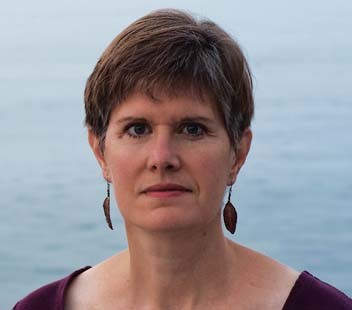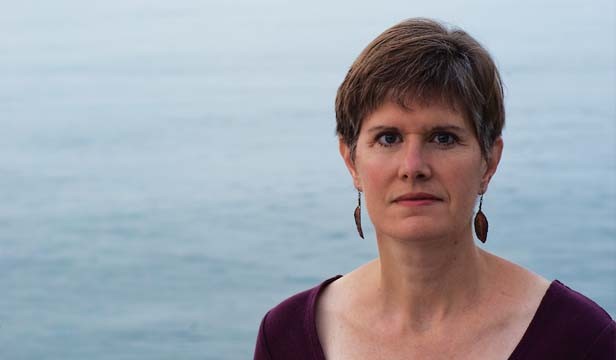Biologist Dr. Sandra Steingraber describes her 1997 book, Living Downstream, as a sort of love story between her and Pekin, the place she grew up and where she lived when she learned in her early 20s that she had bladder cancer. The book, throughout which Steingraber threads her personal story, examines evidence linking cancer to synthetic chemicals and pesticides released into the environment.
But a book is only so powerful, Steingraber says. She says that, after the 1997 book release, the county in which Pekin lies couldn’t boast even one bookstore. “I couldn’t even get the books into the hands of the people who I kind of wrote it for,” Steingraber says. Pekin residents, in the 1990s, alleged that they had a cancer cluster, and Pekin was where Steingraber, an adoptee, became yet another member of her family to be diagnosed with cancer. [See “Consider the possibility,” by Jeanne Townsend Handy, Dec. 12, 2007.]
She’s hoping the film version of the book, which she helped screen in Springfield earlier this month, can amplify one of the purposes of the book – to mobilize people to take up the issue of toxic trespass as the human rights issue of the day. “I hope they come away feeling like there’s a place for them in this and that they decide that they’re not going to turn away anymore, that they’re really going to engage with this,” she says.
The film is directed by Chanda Chevannes, who says she first saw the makings of a film in Steingraber’s book when she read it in 1998, when she was just out of high school. By 2004, when Chevannes realized no film had been made yet out of the book, she decided to take on the task herself. She says her main goal with the film, which is now available for screenings, is to raise awareness and inspire action.
While the book takes on a wider range of environmental topics, the film focuses on the issues of PCBs (polychlorinated biphenyls) – man-made chemicals banned in 1979 because of their toxicity – and atrazine, a pesticide banned in the European Union but still applied on American farms. [See “Popular farm chemical goes on trial in Springfield,” by Diane Ivey, Mar. 4, 2010, at illinoistimes.com.]
The film explores the damage chemicals such as atrazine can cause after they’re released into the environment – from a male frog turned into a female frog or a rodent’s mammary gland structure significantly altered due to atrazine exposure.
While pinpointing which chemicals cause what types of cancer in whom is difficult, Steingraber says, scientists know enough about certain chemicals to say that they are likely causing cancer, or cancer susceptibility, in some individuals. And that’s enough to eliminate them, she says.
“The general rule should be that if it’s inherently toxic, and it starts showing up in people’s bodies, then we have to get rid of it,” she says, adding that European countries have taken on such a precautionary approach. “What we seem to do here is allow inherently toxic substances to be used and then police the results and try to make sure that nobody’s exposed to too much of it,” Steingraber says. “So we’re continually trying to maximize harm rather than eliminate it through design.” She says the better solution would be to first look for a non-toxic alternative, or to redesign the system in which the chemical is thought necessary, such as transitioning from production agriculture to more locally serving organic farms.
The movement against cancer has to become more than awareness and more than a search for a cure, Steingraber says, emphasizing prevention and noting the role the environment plays. She adds that many find the idea of solving the world’s environmental problems, and the problem of cancer, overwhelming, but unnecessarily so.
“If it were true that most of our cancer came from reasons of inherited predisposition, that would be so depressing because all we would have to do is wait around for our genes to blow up, and we couldn’t do a thing because you can’t change your ancestors. But there’s everything you can do about the environment. We created this situation and we created it fairly recently,” Steingraber says. “They [environmental pollutants] are under our control and we can change them in some other direction.”
The home viewing DVD of Living Downstream will be available in 2011. Educational DVDs and screening opportunities are now available. Visit www.livingdownstream.com for more information. In conjunction with the movie’s release, a second edition of the book, with updated scientific data, is now available.




















